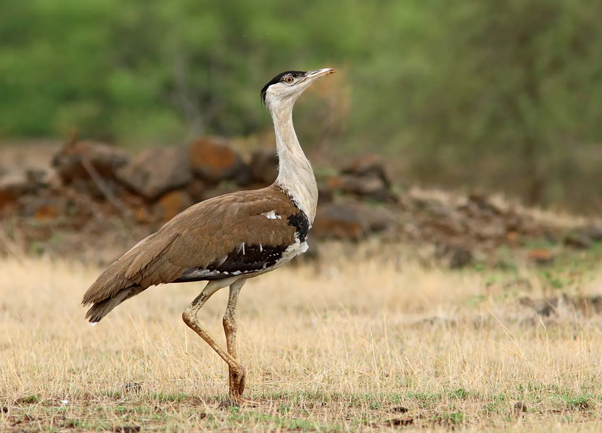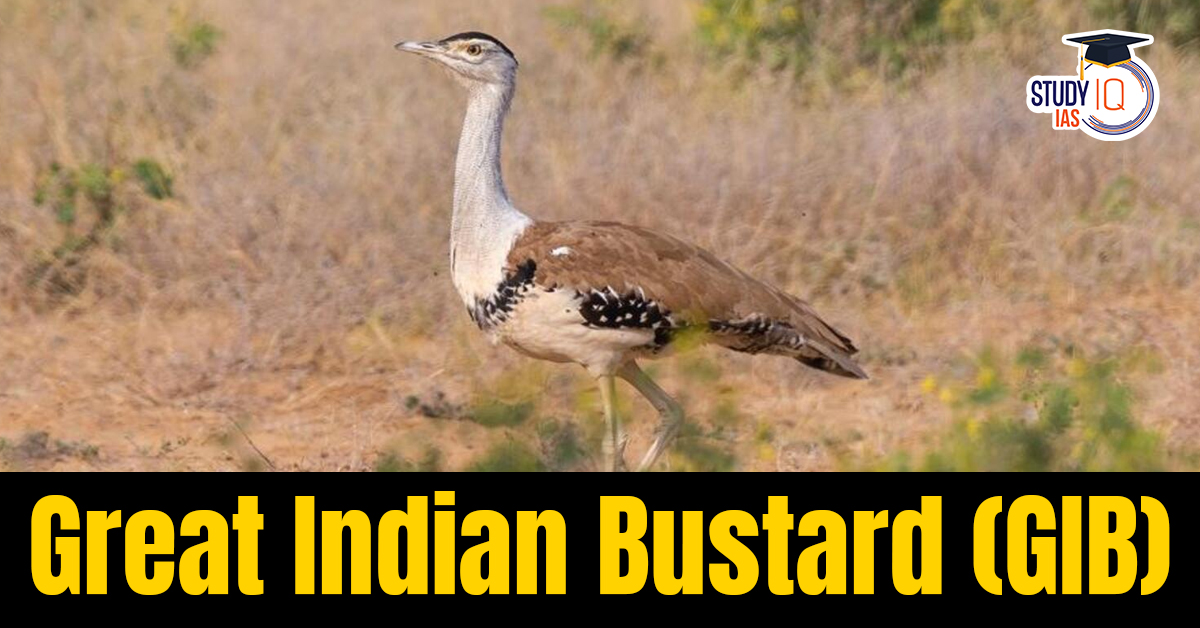Table of Contents
Context: Recently, four Great Indian Bustard (GIB) chicks were hatched in a single week at the Sudasari Centre in Rajasthan, marking a key milestone in the species’ recovery.
About Great Indian Bustard (GIB)
- Great Indian Bustard (GIB) is endemic to the Indian subcontinent.
- Habitat: open grasslands, arid plains and scrub forests.
- Range: Its population is confined mostly to Rajasthan and Gujarat. Small population found in Maharashtra, Karnataka and Andhra Pradesh.
Features of GIB
- Males have a distinctive black crown, a long neck, and a buff-coloured body with white underparts.
- Females are generally smaller and lack the prominent black crown.
- One of the heaviest flying birds, weighing between 10 to 15 kg.
- It is primarily omnivorous. It feeds on insects like grasshoppers, beetles and sometimes even small rodents and reptiles. It also feeds on grass seeds.

Conservation Status of GIB
- IUCN status: Critically Endangered
- Wildlife Protection Act, 1972: Schedule I
- CITES: Appendix 1
- Covered under species recovery program.
- Only less than 150 GIBs are left in the wild and are almost exclusively restricted to India.
Threats
- Power lines (disturbs visibility)
- Habitat destruction and fragmentation & Overgrazing.
Steps taken to Conserve Great Indian Bustard (GIB)
- Species Recovery Programme: It is kept in the species recovery programme under the Integrated Development of Wildlife Habitats of the Ministry of Environment, Forests and Climate Change (MoEFCC).
Firefly Bird Diverters
- Firefly bird diverters are flaps installed on power lines.
- They work as reflectors for bird species like the GIB. Birds can spot them from a distance of about 50 meters and change their path of flight to avoid collision with power lines.
Artificial Hatching
- The conservation breeding programme started in 2019 by collecting eggs from the wild and artificially hatching them.
- The first chick, named ‘Uno,’ hatched on 21 June 2019. Eight more chicks were hatched that year and raised and monitored. A total of 29 GIBs have been housed in the two breeding centres in Rajasthan.
| UPSC PYQ |
Q. With reference to India’s Desert National Park, which of the following statements is correct? (2020)
Select the correct answer using the code given below: (a) 1 and 2 only (b) 2 and 3 only (c) 1 and 3 only (d) 1, 2 and 3 Answer: C |


 Cheetah Project Steering Committee Key R...
Cheetah Project Steering Committee Key R...
 Alfalfa Flowering Plant, Benefits and Nu...
Alfalfa Flowering Plant, Benefits and Nu...
 Bluewashing: New Categorisation by CPCB
Bluewashing: New Categorisation by CPCB





















